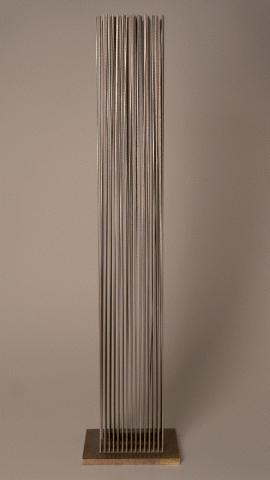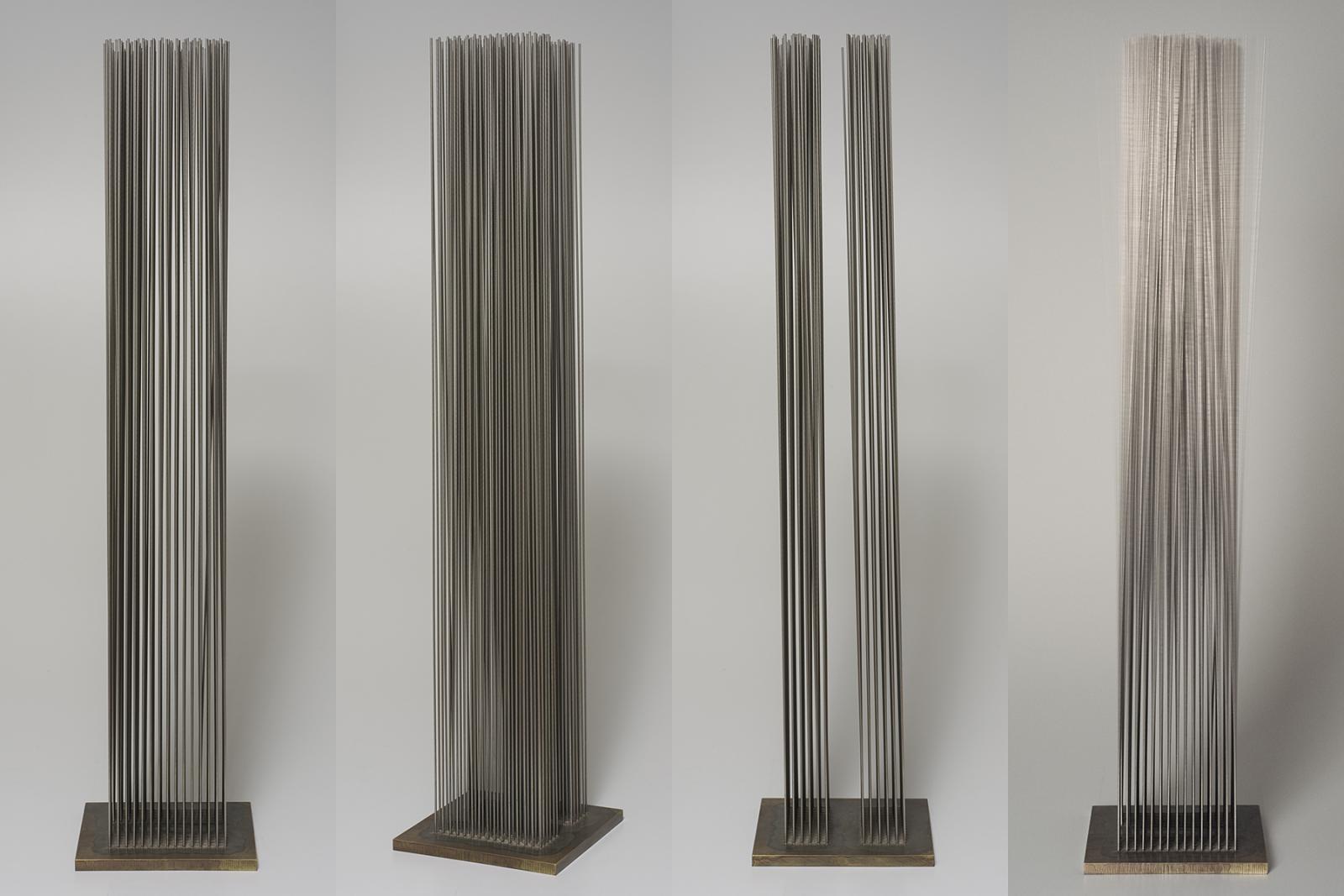2022 Common Work of Art
untitled (sounding sculpture), Harry Bertoia

Harry Bertoia (1915–1978)
born San Lorenzo, Italy; died Barto, Pennsylvania, United States
untitled (sounding sculpture), circa 1968
brass
Bequest of Donald Hatch in memory of Mary Bole Hatch to the University of Kansas. On deposit to the Spencer Museum of Art from the School of Architecture and Urban Design, 1980.0207

Each year we select a Common Work of Art to provide a visual pairing with the KU Common Book. This year’s selection is an untitled sounding sculpture by Harry Bertoia to accompany the KU Common Book, Disability Visibility: First-Person Stories from the Twenty-First Century, edited by Alice Wong. This anthology of personal essays by people with disabilities explores the complexities of the contemporary disabled experience, challenges assumptions, deepens understanding, and celebrates disability culture.
This year’s Common Work of Art provides the Spencer with opportunities to develop and demonstrate methods for making our collection, including multisensory art, accessible to all audiences. It also allows our audiences an opportunity to practice care as they interact with art meaningfully and respectfully.
In the 1960s, Bertoia began experimenting with sound sculptures, a type of art that is meant to be touched, seen, and heard. He chose metals such as brass to create these sculptures based on their ability to resonate sound when gently touched. Despite Bertoia’s intentions, touching these sound sculptures poses several risks. The oils present on our hands can damage metal over time. Aggressive handling can bend or even break the sculpture’s thin brass rods, and art displayed without a protective cover is subject to damage from dust and accidental contact.
How can we honor Bertoia’s intent for his sculpture while maintaining it for future audiences to enjoy? This question relates to a larger theme of equitable access. By highlighting this multisensory artwork as this year’s Common Work of Art, we consider how museums can support multi-faceted access to art mindfully, compassionately, and sustainably. The display of this sculpture includes virtual and in-gallery forms of access that are especially beneficial to audiences with disabilities.
Watch a video of the sounding sculpture being played.
In the essay from Disability Visibility “Why My Novel is Dedicated to My Disabled Friend Maddy,” A. H. Reaume describes a mutually beneficial collaboration with her book editor as “part of the ethics of care and support that so many disabled people show one another.” This interdependence and ethics of care can be cultivated between disabled and able-bodied persons, but also between humans and the more-than-human world, or between humans and art. Bertoia created this sculpture intending it to provide observable movement and sound to audiences. The art cannot fulfill its function without our intervention and acknowledgment. Yet, it cannot resonate and vibrate if we intervene carelessly and without appreciation.
Bertoia’s untitled (sounding sculpture) will be on view in the Spencer’s Jack & Lavon Brosseau Center for Learning beginning August 16, along with a month-long installation of other art from the collection in dialogue with themes from the Common Book. The sculpture will remain in the Brosseau Center for the entire academic year until May 14, 2023.
Links:
- Notes from the Lab: Harry Bertoia & The Science of Interaction, from the Nasher Sculpture Center
- Harry Bertoia Foundation
Related assignments:
